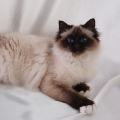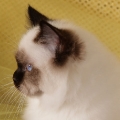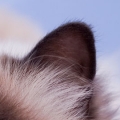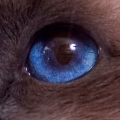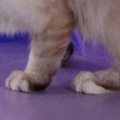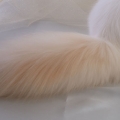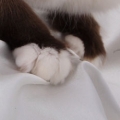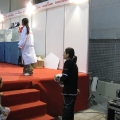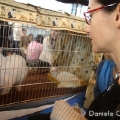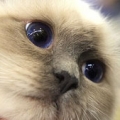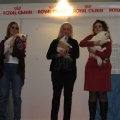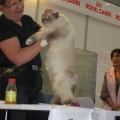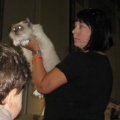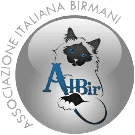Standard & Colours
Colours and Variety |
|
| Colours and varieties Birman borns completely white. Only after few weeks the extremities start colouring, but only by one month of life it is possible to distinguish the real pet colour. The colour of the birman is determined by the tonalities taken by the extremities, called points. Young birmans of solid colour (not tabby) may show drawings on the patch similar to the tabby variety. These drawings are called ghost markings and start disappearing with the age. By some varieties as red and cream, the ghost-markings may even be present for all life. |
|
Seal Point |
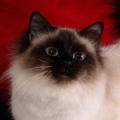 |
| Blue Point The fur is brighter respect to the seal. The points are silver-grey. The truffle is dark-grey. Even by the blue the coat by the time starts darkening, taking tonalities varying from beige to grey. Births and inseminations do accelerate this process. Eyes are slight brighter respect to the seal, but always of a thick blue. |
 |
| Chocolate Point The point is milk-chocolate, as the truffle. The fur is very bright and darkened less than in the seal or in the blue. Eyes are of a very dark blue inclining to purple. |
 |
| Lilac Point Points are of a bright rose-grey and soft. The truffle is bright-grey. The contrast of the points with the gloves is light and it is difficult to identify the gloving especially in young age. |
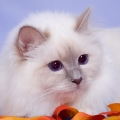 |
| Red Point Points are orange-red and the fur is very bright. The truffle is rose. Eyes are thick blue |
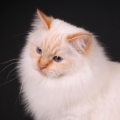 |
| Cream Point Strong dilution of the red, where is very difficult to identify the gloving. Eyes are dark-blue. |
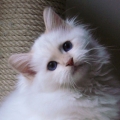 |
| Tabby point This variety must, as by the solids, show its features only on the extremities of the sacred of Birmania.The tabby drawing is present in all the above mentioned colours. The tabby, which maintain the agouti original feature of the coat, that is the pigmentation of alternated colour bands of each single hair, is identifiable through particular drawings of the point like the M in the middle of the forehead, the lines around the tail and legs, the white circle around the eyes, the white edge of the ears, and on the back of the ears is visible a bright spot reminding a thumb print. The truffle of the nose is surrounded by the point colour, but the remaining is rose. |
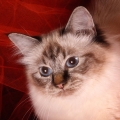 |
| Tortie Point The torte coloration, which genetically can only be of the female cats, is determined by the mix of the seal, blue, choc and lilac coloration with the orange gene, which determines the red and the cream. By the tortie variety are recognized the seal tortie point (seal plus red), blue tortie point (blue plus cream), chocolate tortie point (chocolate plus red) and lilac tortie point (lilac plus cream). The particularity of the tortie is that no patch is similar to the other, making unique every female of this variety. The clear predominance of a colour over the other may determine a defect by the judgement. |
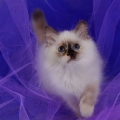 |
| Torbie Point The torbie point are female tortie-tabby point and they present every tortie feature in the tabby alternative in every of the above described coloration |
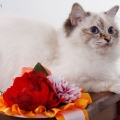 |
| Text for courtesy of Chiara de Paolis | |
